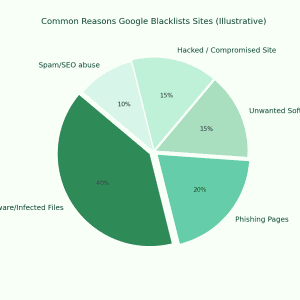Understanding Reflected XSS Vulnerability in Google Code Jam
Reflected Cross-Site Scripting (XSS) remains a significant security concern for web applications, allowing attackers to inject malicious scripts that execute in the context of users’ browsers. A notable instance of this vulnerability was identified in Google Code Jam, the popular coding competition platform hosted by Google. This article delves into the nature of this reflected XSS, its implications, and the broader lessons it offers on securing web-based platforms.
What is Reflected XSS?
Reflected XSS occurs when a malicious script is embedded into a URL or input field and immediately reflected back by the server in the response without proper sanitization. When an unsuspecting user clicks on such a link, the script runs in their browser, potentially compromising sensitive information or hijacking user sessions.
Details of the Google Code Jam XSS Vulnerability
The vulnerability was discovered in 2018 on the Google Code Jam 2018 challenge site, specifically within the scoreboard pages. The reflected XSS payload was triggered via the URL path interpreted and reflected in toast messages, enabling the execution of malicious JavaScript.
Interestingly, the XSS landed in the toast notification messages — brief pop-up messages displayed to users — making it a subtle but potent method for script execution. The attack required the victim to first visit the homepage, which established the necessary session context before loading the vulnerable pages.
Proof of Concept (PoC)
An example malicious URL demonstrating this vulnerability:
https://codejam.withgoogle.com/2018/challenges/0000000000007766/scoreboard/for/%3Cimg%20src=x%20onerror=alert(document.domain)%3EThis URL injects an image tag with an onerror event that triggers an alert dialog displaying the current domain, confirming XSS execution.
Impact of the Vulnerability
- Account Compromise: Attackers could exploit this reflected XSS to gain unauthorized access to users’ Code Jam accounts.
- Data Manipulation: Attackers could read and modify sensitive profile information such as address and phone number.
- Session Hijacking: The vulnerability could allow attackers to impersonate victims, facilitating further attacks.
Content Security Policy (CSP) and Its Role
Google Code Jam had implemented a Content Security Policy (CSP), a defense mechanism designed to restrict resource loading and script execution, which mitigated this vulnerability against modern browsers. Due to CSP restrictions, the reflected XSS payload only executed in browsers lacking CSP support, such as Internet Explorer.
The restrictive CSP blocked inline scripts and external sources not explicitly allowed. However, research shows that CSPs can sometimes be bypassed through sophisticated payloads. In this case, attempts to exploit Google’s gstatic.com domain to circumvent CSP with AngularJS based payloads were unsuccessful due to restrictions in script injection and dynamic execution.
Example Attack Scenario
To understand the risk, consider the following JavaScript script that could be executed by an attacker leveraging the XSS vulnerability:
// Navigate to profile page
document.querySelector('[href="/2018/profile"]').click();
setTimeout(function() {
// Modify the username field
document.querySelector('#nickname').value = 'compromisedUser';
// Trigger the input event to enable submission
var event = new Event('input', { bubbles: true });
document.querySelector('#nickname').dispatchEvent(event);
// Submit the updated profile form
document.querySelector('[type="submit"]').click();
}, 1000);This script programmatically alters user profile data, demonstrating how an attacker could manipulate user information without their consent.
Vulnerability Timeline and Resolution
| Date | Event |
|---|---|
| 2018-08-29 | Vulnerability Reported |
| 2018-08-30 | Priority Assigned (P2) |
| 2018-08-30 | Acknowledgment by Development Team |
| 2018-09-05 | Reward Issued to Researcher |
| 2018-09-16 | Fix Deployed to Production |
Broader Context: The Importance of XSS Protection
Cross-Site Scripting vulnerabilities account for roughly 30% of all web application security issues reported by OWASP as of their 2021 Top 10 list. Reflected XSS, although often easier to detect than stored XSS, remains a persistent threat, especially when combined with social engineering.
Modern mitigation strategies against XSS include:
- Input Validation and Output Encoding: Ensuring all user inputs are sanitized and properly encoded before rendering.
- Content Security Policy (CSP): Deploying strict CSP headers to restrict where scripts can be loaded and executed.
- Use of Web Application Firewalls (WAFs): Automatically filtering out malicious requests.
- Periodic Security Audits: Regularly testing applications with automated scanners and manual penetration testing.
Several case studies have demonstrated how inadequate XSS protections can lead to massive breaches. For example, in 2018, an XSS flaw in a major social media platform allowed attackers to spread malware and hijack accounts of millions of users, emphasizing the critical need for robust defenses.
Conclusion
The reflected XSS vulnerability in Google Code Jam highlighted the subtle ways in which web applications can be compromised. While their implementation of CSP reduced the risk significantly, this case underscores the importance of multi-layered security controls. Developers and security teams must remain vigilant, employing comprehensive XSS prevention techniques and regular security assessments to protect users and data integrity.



